#1 Learn About Psychology
Psychology is one of the fields of science and applied science about the behavior, mental functions, and mental processes of human beings scientifically. Practitioners in psychology are called psychologists. Psychologists attempt to study the role of mental functioning in individual and group behavior, as well as to learn about the underlying physiological and neurobiological processes of behavior.
Etymology
Consumer behavior diagram. It is seen that the decision-making process of a consumer is influenced by three main facto namely marketing strategy, individual differences, and environmental factors.
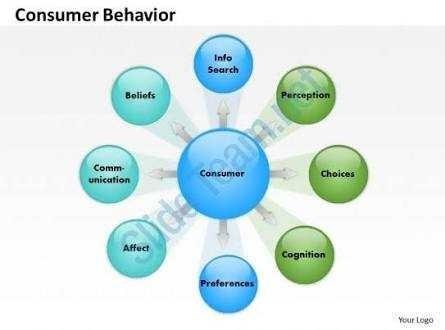
Image source
Consumer behavior diagram. It is seen that the decision-making process of a consumer is influenced by three main facto namely marketing strategy, individual differences, and environmental factors.
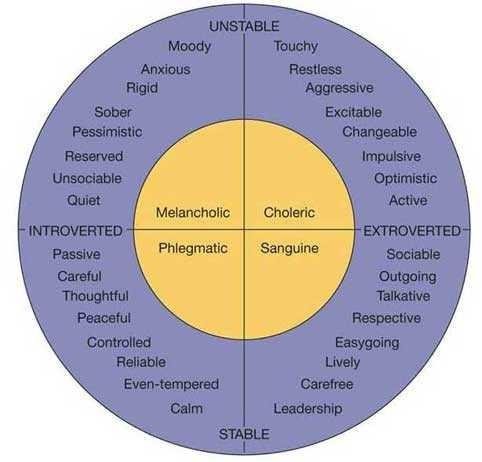
Image source
Eysenck diagram. Eysenck Personality Diagram which is a development of Hippocrates theory.
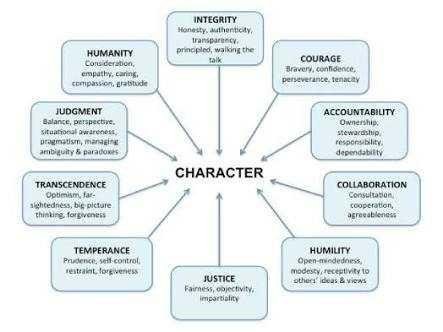
Image source
Moral Component Connection Diagram in Character Formation. Moral is the good-bad determination of an act and human behavior. Examples: apologize, thank you, help others, devote to both parents. Character development in an educational system is the linkage between the components of characters that contain the values of behavior, which can be done or acting gradually and interconnected between knowledge of behavioral values with a strong attitude or emotion to execute it, whether against God YME, himself, fellow, environment, nation and country and the international world.
According to its origin, psychology comes from the Ancient Greek: "ψυχή" (Psychē meaning soul) and "-λογία" (-logia which means science, so etymologically, psychology can be interpreted with the study of the soul.
History
As part of science, psychology through a long journey. The concept of psychology can be traced back to ancient Greece. Psychology has its roots in the field of philosophy which was initiated since the time of Aristotle as the science of the soul, the science of the life force (levens beginsel). Aristotle views psychology as a science that studies the symptoms of life. The soul is the element of life (Anima), therefore every living being has a soul. [4] The history of psychology is in line with intellectual development in Europe, but earned its pragmatic form in the Americas.
Psychology as a science
Although there has always been a thought about the science of human learning along with the idea of science that studies nature, but because of the complexity and dynamism of human beings to be understood, the new psychology was created as a science since the late 1800s when Wilhelm Wundt founded the laboratory psychology first in the world.
Wundt Laboratory
In 1879, Wilhelm Wundt founded the first Psychology laboratory at the University of Leipzig, Germany. Characterized by the establishment of this laboratory, the scientific method to better understand humans has been found although not yet adequate. With the establishment of this laboratory, then complete the requirement to make psychology as science. Therefore, the establishment of Wundt laboratory is also recognized as the date of the founding of psychology as a science.
Method
Some methodologies in psychology, among others, are as follows:
Experimental Methodology
This method is usually done in the laboratory by conducting various experiments. Researchers have complete control over the course of an experiment. That determines what will do what will be examined, when will do research, how often do the research, and so forth. In the experimental method, the nature of the subjectivity of the introspection method will be overcome. In the purely instrospect method only the self-investigator becomes the object. But on experimental instrospection the number of subjects is many, that is, those who are experimenting it. With the extent or the number of research subjects then the results obtained will be more objective.Metode research generally begins with the hypothesis of prediction / forecasting, branching of the theory, described and formulated so that it can be tested.Scientific Observations
In scientific observations, a situation in situations is not deliberate. Rather with a scientific process and spontaneously. This natural observation can be applied also to other behaviors, for example: the behavior of the people who are in the department store, the behavior of motorists on the street, the behavior of children who are playing, the behavior of people in natural disasters, and so on .History of Life (biographical method)
The history of one's life can be an important source of data to better know the "soul" of the person concerned, for example from the story of his mother, a child who does not go to class may know that he is not less clever but his interest since childhood is in music so he is not serious enough to follow his schooling. In this method people describe the circumstances, attitudes or other attitudes about the person concerned. In this method besides having advantages also have weaknesses, that is not uncommon this method is subjective. Historical life can be arranged in 2 ways, namely: making diary and reconstruction biographyInterview
The interview is a question and answer of the examiner and the person being examined. In order for a person to be examined it can discover the content of his own heart, his views, his opinions etc. in such a way that the person who is interviewing can dig up all the information needed. Both the questionnaires or interviews both have similarities, but differ in the way they are presented. Advantages of interview compared with questionnaire are:
• In the interview if there are things that are less clear then it can be clarified
• Interviewer (asker) can adjust to interviewee mood (respondent questioned)
• There is a direct interaction of face to face so it is expected to foster good relationships during the interview process.
there are several interview techniques that are: free interview, directional interview, open interview and closed interview.
Questionnaire
Questionnaire is an interview in written form. All questions have been compiled in writing on the questionnaires, and the interviewee just reads the questions asked, then answers them in writing as well. The answers will be analyzed to find out what is being investigated. This questionnaire also has its advantages and disadvantages.Psychological Examination
In popular language psychological examination is also called Psychodiagnostic or Psychological Assessment. This method uses certain psychological tools that can only be used by highly trained experts. they can be used to measure and to know the level of one's intelligence, the direction of one's interest, one's attitude, one's personality structure, and others from the person being examined. Another method of psychological examination that is individual is a personality projective test of a person shown an ambiguous stimuli and he was asked to tell itMethods of Analysis of Works
Performed by analyzing the works such as drawings, diaries or essays that have been made. This is because the work can be considered as the originator of the state of one's soul.Statistical Methods
Commonly used by collecting data or materials in research and then analyzing results; that has been obtained.
Method of Developmental Psychology
In the Developmental Psychology Method has 2 methods, namely general methods and special methods. on this general method of approach used with longitudinal, transverse, and cross-cultural approaches. From this approach seen the data obtained as a whole the development or only some aspects only and can also see with various factors of congenital and environmental, especially culture. While the special method is a method to be investigated by a process tool or calculation meticulous and definite. In this approach can be used with experimental and observational approaches.
Contemporary psychology
Beginning in the 19th century, where at that time developed 2 theories in explaining the behavior, namely:
•Psychology Faculty
Faculty of Psychology is a 19th century doctrine of the existence of innate mental powers, according to this theory, psychological capabilities are fragmented in several 'faculties' that include thinking, feeling, and desiring. The faculty is subdivided into several sub-faculties. We remember through the subfaculty of memory, imagery through imaginary subfacultures, and so on.
•Associate Psychology
A section of contemporary 19th century psychology who believes that the process of psychology is essentially an ideational association that is the idea of entering through the sense-apparatus and associated with certain principles such as resemblance, contrast, and proximity.
The function of psychology as a science
psychology has three functions as a science:
• explain, that is able to explain what, how and why behavior it happen. result explanation of the form of description or discussion of the descriptive
• predicted, that is able to predict or predict what, how and why behavior it happen. prediction results form prognosis, prediction or estimates
• control, that behavior in accordance with the expected. realization the form of the action nature preventive or prevention, intervention or treatment and rehabilitasiatau care.
approach behavior
approach behavior, basically behavior is the response above the stimulus come. simply can be described in the model's - R or a relationship the stimulus - response. this means behavior was like reflexes without working mental at all.
approach cognitive
approach cognitive emphasize that behavior is mental processes, where individuals (organisms) active in the capture, assess, compare, and respond to the stimulus before reaction. individual receive stimulus ago do mental processes before react to the stimulus come.
approach psychoanalysis
From the 1890s until his death in 1939, the Austrian physician Sigmund Freud developed a method of psychotherapy known as psychoanalysis. Freud's understanding of mind was based on methods of interpretation, introspection, and clinical observation, and focused on resolving subconscious conflicts, mental tensions, and other psychological disorders. Sigmund Freud believes that the lives of individuals are largely controlled by the subconscious. So much behavior is based on things that are not realized, such as desire, impulse, or encouragement.
Theories about Psychoanalysis apart from being very famous, are also very controversial. This is mainly because his theory deals with topics such as sexuality and the subconscious. These topics were still considered very taboo at the time, and Freud gave the catalyst to discuss the topic openly in civilized societies. In addition, many people who reject the theory that is considered degrading human dignity.
Phenomenological approach
This phenomenological approach is more concerned with the subjective experience of individuals because the behavior is strongly influenced by the individual's view of himself and his world, the concept of himself, his self-esteem and all things that concern his awareness or actualization. This means seeing a person's behavior is always associated with a phenomenon about himself.
Study
psychology is science broad and ambitious, equipped by the biologist and neuroscience on the border with natural science and equipped by sociology and anthropologipada borders with social Sciences. some of the study psychology of them are:
Developmental psychology
Is a field of psychological studies that studies human development and the factors that shape a person's behavior from birth to old age. Developmental psychology is closely related to social psychology, since most developments occur in the context of social interaction. And also closely related to the psychology of personality, because the development of individuals can form a distinctive personality of the individual
Social Psychology
This field has 3 scopes, namely:
• studies of social influences on individual processes, for example: the study of perception, learning process motivation, attribution (nature)
• the study of individual joint processes, such as language, social attitudes, imitative behavior and others
• the study of group interaction, for example, leadership, komunikasihubungan power, cooperation in group, and the competition.
psychology personality
is the field of study psychology learn human behavior in adjust to the environment, psychology personality is closely related with developmental psychology and social psychology, because of personality is the result of the individual development since still small and how to individual itself the interacting social environment.
Cognitive psychology
Is a field of psychological studies that study the ability of cognition, such as: Perception, learning process, memory skills, attention, language skills and emotions.
The applied area
The areas of applied psychology are the areas where psychological studies can be applied. However, unfamiliar Indonesians with specialization make this area of application ambiguous, for example, an educational psychologist might work on a company's HRD, or vice versa.
Educational Psychology
Educational psychology seeks to create a supportive situation for students in developing academic, socializing, and emotional skills. Which aims to form the mind set of children
Industrial and organizational psychology
Industrial psychology focuses on developing, evaluating and predicting the performance of work done by individuals, whereas organizational psychology studies how an organization influences and interacts with its members
Engineering psychology
The application of psychology related to the interaction between man and machine to minimize human error when dealing with the machine (human error)
Clinical Psychology
Is a field of psychological studies and also the application of psychology in understanding, preventing and restoring the individual psychological state to the normal threshold.
Response
response is a term used by the psychology to call the reaction of excitatory received by the senses. response usually diujudkan in the form of behavior appear after stimulation. theory behaviorism use the term response paired with rangsangdalam explain the formation of behavior. response is the behaviors that appears due to the existence of excitatory of the environment. if excitatory and response paired or conditioned it will form the behavior of new to stimulate conditioned.
psychological disorders
mental can arise from the scale mild to severe. mental light for example depression that is not too heavy marked by-like symptoms Moody, there is excited, or panic. while mental heavier for example depression marked with decreasing the ability think, cognitive, psychomotor, and overanxious will be the future. the toughest is psychotic that have been unable to distinguish imagination and reality.
all it originally triggered by stress that can not be faced with the adaptation good. therefore, stress is a condition, not disorders that may be a lot of the purpose of people during this time.
no matter how much the severity of mental disorder, when treated with the right it will be healed and patients mental disorder can come back to normal. therapy alone consists of two types, ie with drugs and psychotherapy. mental related to the imbalance chemical compounds in the brain or also called neurotransmitter. to restore it, it is necessary drugs. while to recover psychiatric patients, it takes psychotherapy in the form of counseling.
crisis is a state of disorders balance psychological is suddenly so that a person's ability failed to address the problem and there is evidence pressure and functional disorders. crisis appear when an event stressful happening exceed one's ability to resolve the problem effectively when dealing with the challenge or the threat. impact of the crisis of each individual depends on the point of view of a person individuals to events such as the cause of the onset of anger large or disorders and inability someone to complete the disorder through the mechanism of the completion of the problems used.
crisis can also lead to the emergence of a wide range of reaction emotional / feeling like, fear, sadness, guilt, and others. emotion or feeling is an important part integral in our lives. feeling can be a feeling of positive or negative; example, there is nothing wrong when someone feel the grief after a loss of a family member. However, when all this feeling affect the daily life and continues in the years, it is necessary action adjustment to it.
Stress is the body's reaction to any unpleasant situation (stressor). Crises often create stress that can be acute or prolonged. The negative effect of stress is stress can cause feelings of anger, sadness, distress and feelings of destruction that can cause health problems such as headaches, indigestion, suicide attempts, and others. Stress can also interfere with the mind, reduce concentration, and weaken decision making. This can cause people to be very sensitive because of the influence of stress. Prolonged stress, and how to deal with unhealthy stress, can cause health problems.
However, stress can sometimes spur people to perform better. There is also stress that is commonly found in everyday life and is a natural process in human efforts to adjust to the environment. Stress affects various aspects of life such as our physical, emotional and behavioral aspects and the impact that occurs can be either positive or negative. So, stress can also give a positive influence where stress can motivate to do better and can anticipate when faced with subsequent stress. Some problems and crises can cause stress. Children and adolescents, as well as adults, may exhibit clinical signs and symptoms. Lots of people who are affected by mental disorders depression.
Stigma is a bad judgment and a negative attitude toward a particular person or group. There is still a big problem in overcoming the stigma associated with mental health disorders. Words or phrases like "crazy" are often spoken and become feared. Often people argue that people with mental disorders are a weak person and can not adapt to stress. If a person suffers from a mental disorder, their family often denies or hides this problem, as they are embarrassed or scared by people's judgment. It is important to note that nobody wants or asks for mental disorders. People with mental disorders need appropriate attention, empathy, support and health assistance. Mental disorders can be suffering and difficulty to function if left untreated. When treated and treated correctly, people with mental disorders may be free of symptoms and function well.
In addition, the understanding of the meaning of the difference between mental disorders and mental health problems is important for known. according to the diagnostic and statistical manual of mental disorders-V (DSM-5, 2013), mental disorder is defined as follows (it 20): "a collection of symptoms marked by a disturbance clinical significant on cognition individuals, regulation emotions, or a person's behavior, reflecting the dysfunction on psychological processes, biological, or the development, the underlying mental function."
Mental disorders usually Associated with distress significant or disability in social life, occupational or activities other important. a state of the acceptable or culturally appropriate, as the reaction stressors normal or loss, such as the death of someone who loved, not a mental disorders. deviant behavior socially (for example, political and religious / trust) and conflict that appears between individuals and the environment, not a mental disorders until deviation or the results of the conflict cause dysfunction on the individual, as described previously.
Based on the above definition, mental health problems is related problems with the way of thinking, set the feeling of a person, and to be. diedisi self-help skills and techniques I going to talk about the interests of thinking, feelings and attitude.
To determine whether a response, signs, or genjala you meet the criteria of mental disorders depression, many other factors keep in mind. the time of these symptoms there, behavioral disorders that appears, stress accompanying and strategies for deal with the stress need to be assessed. type and support resources also vary depending on the degree of the severity of the problem the individual.
Early detection of consultation professional is one of the key staple. further intervasi or stress management will be provided with the aim to keep the individual remain on the state of healthy both physical and mental and can be regain the function of their everyday. in addition, learn to apply the self-help skills and techniques of intervasi provide greater ability to control stress in the life of the individual and help them to stay at the level of stress low.
Association
Intercourse is a social relationship between someone with someone else that lasted in a relatively long term so that happened to affect each other. Interaction is a continuation of the process of social interaction that exists between individuals in their social environment. Strong weakness of a social interaction affects whether or not intimacy is interwoven. A child who always meets and interacts with others in a relatively long period of time will form more association. Unlike people who only occasionally meet or just do social interactions indirectly
In social life there are various forms of association, there are healthy there are also categorized unhealthy association. Healthy association is the association that brings a positive influence for the development of one's personality. On the other hand, unhealthy association leads to patterns of behavior that are detrimental to their own development as well as their impact on others
Associative social interaction is an interaction of a partnership. Such interactions usually lead to the formation of unity or social integration. The associative process is a form of social interaction that can improve the relationship of fellow human solidarity. Social interaction that is associative, which leads to forms of association (relationship or combination) such as: cooperation, accommodation / adjustment, assimilation and acculturation.
Dissociative social interaction is a form of social interaction that separates or applies the opposition process. Dissociative interaction is more directed at fighting against a person or group for a particular purpose. The dissociative process is a form of social interaction that can stretch the solidarity relationship between individuals. Social interactions that are dissociative, which leads to forms of conflict or conflict, such as: competition, contravention and conflict.
Healthy association is the association that leads to the formation of personalities in accordance with the values and social norms, morality and decency that apply.
Familiarity with friends
Maintaining a good relationship in a friend is needed by every human being as a social being. Where someone will always need friends or friends to interact socially in life. And an intimacy is a goal that is expected by someone who has a deep social relationship
friendly in order to always be able to do a positive social interaction. So that can be a true friend figure and can always live blend in with each other.
But every social relation in a friend is likely to be colored by friction or disagreement between each other that causes their relationship of intimacy to diminish. As a social being let someone understand the importance of maintaining a good friendship relationship.
Humans in daily activities can not be separated from human interactions, both positive and negative. Here I try to share ways how to establish a good relationship with friends or with people we do not know.
Here's how to keep a friendship:
• Honor friends, friends are usually our age, some even older than us, therefore we should respect the elderly.
• No kidding outrageous. If we are joking things small things may not matter, but if it is out of bounds, then the relationship can be immediately cracked.
• Occasional gathering. Usually if there is a free time to invite friends of our friends to hangout together to the mall to eat or just a road, this serves to familiarize ourselves. Do not be too often because it will feel bored.
• Help, help a friend if you have trouble, remember help in a positive. Do not occasionally help a friend if doing wrong let alone breaking the law.
• Worship congregation, in addition to getting a reward that doubled, worship with friends will be more familiar with friends.
• Reminded each other, it is necessary because human nature is forgetful.
• Share, give each other if you have more fortune.
Deviant behavior
The distorted behavior commonly known by the name of social aberrations is behavior that is inconsistent with the values of decency or propriety, both in terms of individual humanity (religion) and its justification as part of social beings.
In Big Indonesian Dictionary of deviant behavior is defined as a person's behavior, actions, or responses to the environment as opposed to the norms and laws that exist in society.
In the life of society, all human actions are limited by the rules (norms) to act and behave in accordance with something that is considered good by society. But in the midst of people's lives we sometimes still encounter actions that are not in accordance with the rules (norms) that apply to the community, for example a siswamenyontek at the time of replication, lie, steal, and disturb other students.
Deviations from the norms or values of society are called deviations, whereas the perpetrators or individuals who make deviations are called deviants. The opposite of aberrant behavior is a non-deviant
behavior often called conformity. Conformity is a form of social interaction in which a person behaves according to group expectations.
Deviant behavior and crime that occurs in society is one of the discussions in criminology. Deviant behavior and crimes themselves in the perspective of criminology can be explained by some theories such as Containment Theory from Walter C. Reckless, Social Bond from Travis Hirschi, and Labeling Theory
Juvenile delinquency
Juvenile delinquency is an act that violates the norm, and rules within the scope of society that are committed in adolescence or the transition of childhood to adulthood.
Juvenile delinquency includes all behaviors that deviate from criminal law norms perpetrated by adolescents. Such behavior will harm himself and those around him.
Environmental psychology (behavior)
Environmental psychology is the psychology that studies human behavior based on the influence of the environment where he lives, whether the social environment, the built environment or the natural environment. In environmental psychology is also studied about the local culture and wisdom of a place in the view of the universe that affects the attitude and mental human.
Environmental psychology deals with the human needs in everyday life, which include plants, animals, material objects, and humans. There are several things that can cause environmental tension (evironmental stress), for example, the condition of the room that will trigger a person's psyche, temperature, atmosphere and nature of light. So the influence of the environment on a person's psychic can be internal, external, and transcendental.
In environmental psychology is also studied about the local culture and wisdom of a place in viewing the universe that affects the attitude and mental human. If local culture and wisdom we understand as a human struggle to enhance the quality of life, then introspection will be the main core of environmental psychology lessons.
The scope of environmental psychology is concerned not only with human, place and human behavior and experience in relation to physical setting but also about design, organization and meaning, or more specific things such as spaces, buildings, neighbors, hospitals and spaces, housing, and settings in other varied scopes. Sociology The environment is a branch of science that is very close to the psychology of the Environment. And there are types of environments in social psychology that are also widely used in environmental psychology, such as:
****•** Natural circles, such as: oceans, hutah and so forth
• Artificial / built environment, such as: highway, pruduk and so on
• Social environment
• Modified environment
Individual relationship with environment
Individual relationship with the environment is not just •walking next door, in the sense that only the environment that has an influence on the individual, the relationship between the individual with the environment there is mutual reciprocity, the environment can affect the individual, but otherwise individuals can also affect the environment. (Walgito, Ben, 1980: 50) The individual's attitude toward the environment is as follows:
• Individuals refuse or oppose the environment
• Individuals accept the environment
• Individuals are neutral
Character or moral education
The strengthening of moral education (moral education) or character education in the present context is very relevant to overcome the current moral crisis in our country.
According to Lickona, character relates to moral concepts (moral knonwing), moral attitude (moral felling), and moral behavior (moral behavior). Based on these three components can be stated that the good character is supported by knowledge of goodness, the desire to do good, and do good deeds.
There are 18 items of character education values that is, Religious, Honest, Tolerance, Discipline, Hard Work, Creative, Self, Democratic, Want to Know, Spirit of Nationality, Love Homeland, Appreciate Achievement, Friendship / Communicative, Love Peace, , Care for the environment, Social Care, Responsibility.
Character education has been the concern of many countries in order to prepare quality generations, not just for the individual interests of the citizens, but also for the people as a whole. Character education can be defined as the deliberate us of all dimensions of school life to the foster optimal character development (our efforts are deliberately from all dimensions of school life / madrasah to help the character formation optimally.
•
Character education requires specific methods that are appropriate for the purpose of education can be achieved. Among the appropriate learning methods are exemplary methods, methods of habituation, and methods of praise and punishment.
Stages of moral development according to John Dewey, namely:
• The pramoral stage, marked that the child is not aware of his attachment to the rules.
• Conventional stage, characterized by the growing awareness of obedience to power.
• The autonomous stage, characterized by the growing attachment to rules based on reciprocity.
Norms, values, and morals
Norms are rules, provisions, measures, laws, traditions that apply at certain times used to regulate the behavior of people and groups to realize order and order in the life of society, nation and state. Example:
• No spitting in any place (norm of decency)
• Killing, stealing, robbing (legal norm)
Values are price, intelligence, at least content, content or qualities that have properties (things) that are important or useful to humanity and something that perfects human beings according to their essence. Example:
• Latest Mercedes cars that are very expensive. (Value in the sense of price)
• The ceremony to bathe the heirlooms of the Yogyakarta and Surakarta palaces is a ceremony filled with Javanese philosophy. (traditional values)
Moral is the good-bad determination of an act and human behavior. Example:
• Likes to help others
• Devote to both parents
The term personality
There are some words or terms that the public treats as a synonym for the word personality, but when the terms are used in personality theories are given different meanings. The adjacent term means:
• Personality; description of behavior descriptively without giving value (devaluative)
• Character (character); depiction of behavior by highlighting the value (right-wrong, good-bad) either expeditiously or implicitly.
• Disposition; characters that have been owned and until now have not changed.
• Temperament (temperament); personality closely related to biologic or physiological determinants, hereditary dispositions.
• Traits (properties); Similar responses to similar stimuli groups take place over a relatively long period of time.
• Type-Attribute: similar to nature, but in a more limited stimulation group.
Extraversion and Introversion
In psychology, there is a grouping of human personality based on how humans gain their passion. This grouping was first coined by Carl Jung (1920), in his book Psychologische Typen. In general, the extroverted person gets the passion (or energy) of social interaction.Extracters usually have an open and sociable personality, and have a high awareness of what is going on around them. While introverts, on the other hand, are perceived to get passion through aloof. Introverts tend to be quiet, reflective, and more concerned about their thinking in their own world. In the extreme tendencies of introversion and extroversion, there is an ambulance that is an intermediate personality between extroverted and introverted. Despite the contrasting differences between introverts and extroverts, Carl Jung assumes that there are rarely human extroverts or introverts.
Critics
Based on the above understanding we are required to know our cultural differences with the culture at the time of psychology emerged as a science. Is the study of science appropriate to our culture or there is a difference in it. For example, when we are a hinterland that still uses hunting in everyday life, hunting can be a benchmark of our intelligence as a rural society, not seen from how intelligence is measured from whether or not we calculate math, answer exam questions, answer a series of intelligence tests and others. The compatibility of psychological theories with our culture is what we must really understand, so they are theories that are truly relevant to our culture and ourselves as human beings.
Thanks for those of you who have visited, and read my writing, which I took from various sources .. if this is useful for you, then use it for learning and apply in your life .. thanks
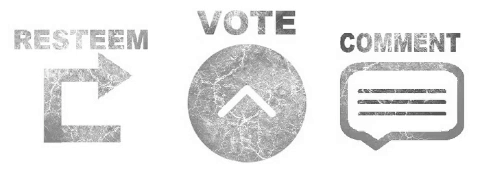
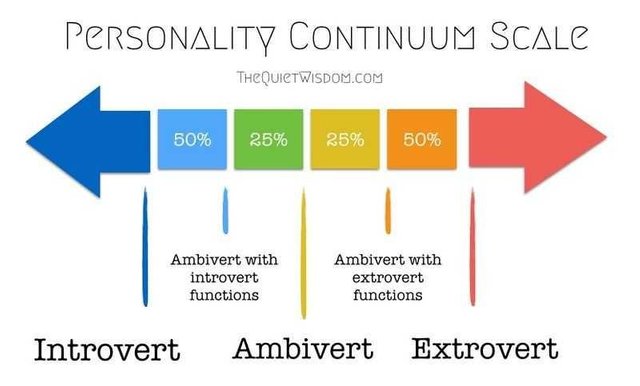
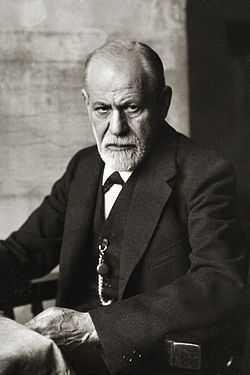
Sneaky Ninja Attack! You have been defended with a 2.53% vote... I was summoned by @abdoelhadi! I have done their bidding and now I will vanish...Whoosh